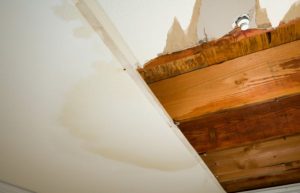
Without being an expert, it can be challenging to tell the age of water damage. With that said, it is best dealt with quickly. It would be best to determine how long the damage has been present to understand the extent. It is also vital to know what needs to happen to stop the water intrusion.
The Dangers of Water Damage
The cause of water damage can be due to many different factors, such as leaky pipes, plumbing issues, sewage backups, and even problems with HVAC units. Moreover, water damage varies because there are different types of water damage. Water class depends on being dirty, clean, and black, depending on the source. They vary in contamination levels but share associated risks.
Determine the Materials
Water affects different materials in many different ways. By determining the type of material that is damaged, you can draw a rough estimate of the timeline. Tile and brick are tough, sturdy material. If these materials are compromised, chances are the damage is older. The water needs time to wear these materials down and seep through. On the other hand, there is drywall, hardwood flooring, and carpet. These materials are all porous and easy for water to find its way through. Water damage will be evident in these materials almost right away.
Look for Rings
Soft or porous materials develop “rings” if water damage has been present for an extended period. In materials like drywall and hardwood flooring, the water soaks in and causes discoloration. When water dries out, it will still leave a stain behind. Say the water damage is persistent. Rings will happen multiple times. This process creates several rings. This pattern shows that water damage is old because of the repetition. Additionally, these rings could be significant for understanding the source of the water. Multiple rings are proof of time in between where there are dry spells. For example, a pipe that only runs the water supply to a shower.
Touch the Spot
It’s quite apparent where there is water; it will be moist. However, by touching the area that the water damage occurred, there is information to be derived. Drywall is a good example. A newly effected drywall will be wet but not soft. On the other hand, drywall that is both soft and wet shows a couple of things. Firstly, the water has had time to soak through and ruin the integrity of the drywall. The water has been sitting in the material long enough to seep in the pores and make them larger. Unfortunately, the same isn't true for sturdy materials such as brick or tile. These materials may not soften, no matter the age of the damage.
Search for Mold
There is a rule of thumb when it comes to mold. Growth will begin within 24-48 hours of water damage. Visible mold indicates at least 48 hours that moisture has soaked in an area. The absence of mold, however, does not mean that the damage is new. There could be factors that do not allow mold spores to thrive in a particular environment. For example, the temperature could not be optimal for growth to happen.
If you suspect that your home is experiencing a leak, call the team at Thompson Building Associates. Our professionals can assist you in finding and addressing the problem. Remember, the longer the issue persists, the more time the damage will worsen. Repairs will become more expensive. For more information, find us on Facebook or Instagram.  Without being an expert, it can be challenging to tell the age of water damage. With that said, it is best dealt with quickly. It would be best to determine how long the damage has been present to understand the extent. It is also vital to know what needs to happen to stop the water intrusion.
Without being an expert, it can be challenging to tell the age of water damage. With that said, it is best dealt with quickly. It would be best to determine how long the damage has been present to understand the extent. It is also vital to know what needs to happen to stop the water intrusion. Without being an expert, it can be challenging to tell the age of water damage. With that said, it is best dealt with quickly. It would be best to determine how long the damage has been present to understand the extent. It is also vital to know what needs to happen to stop the water intrusion.
Without being an expert, it can be challenging to tell the age of water damage. With that said, it is best dealt with quickly. It would be best to determine how long the damage has been present to understand the extent. It is also vital to know what needs to happen to stop the water intrusion.